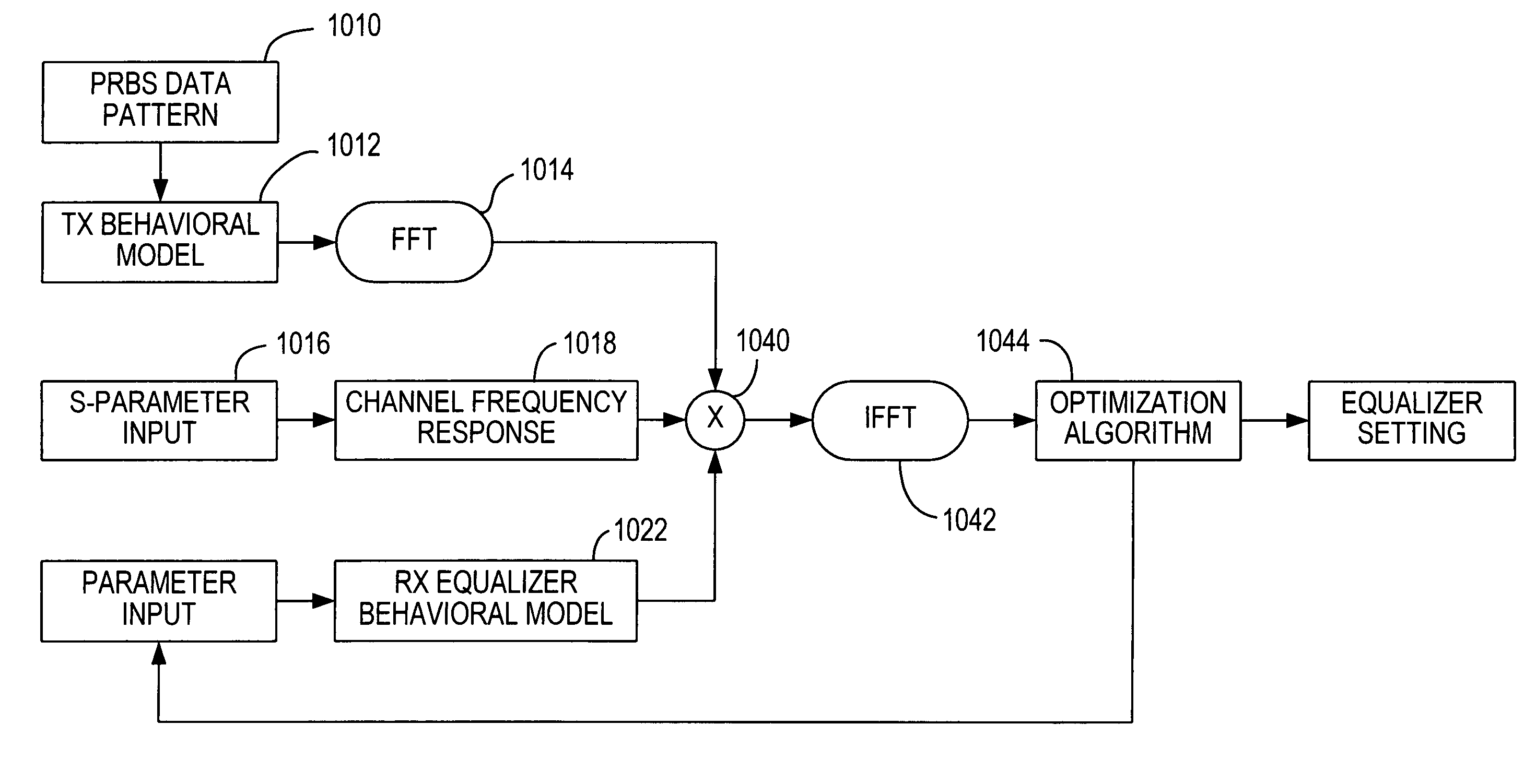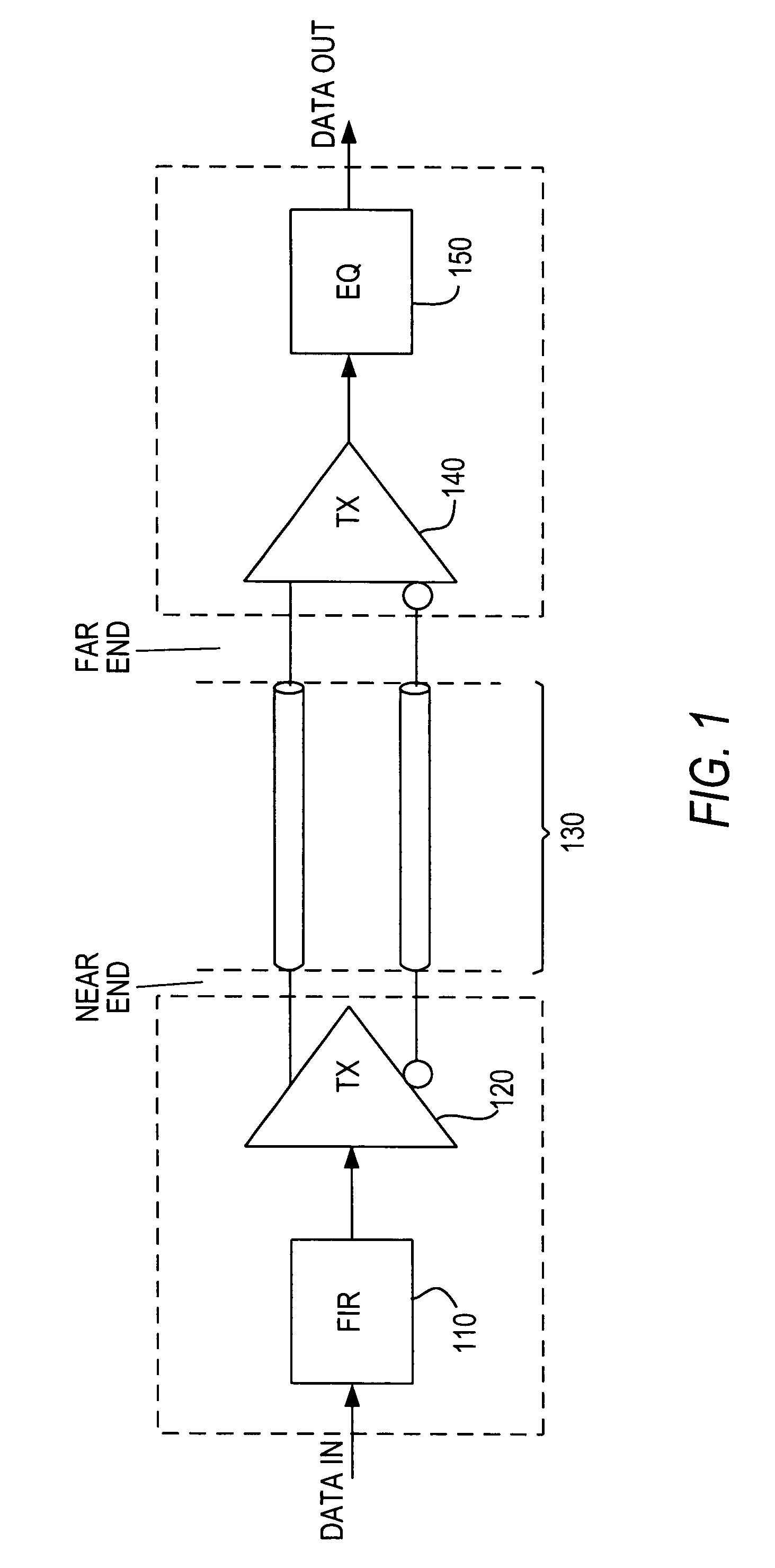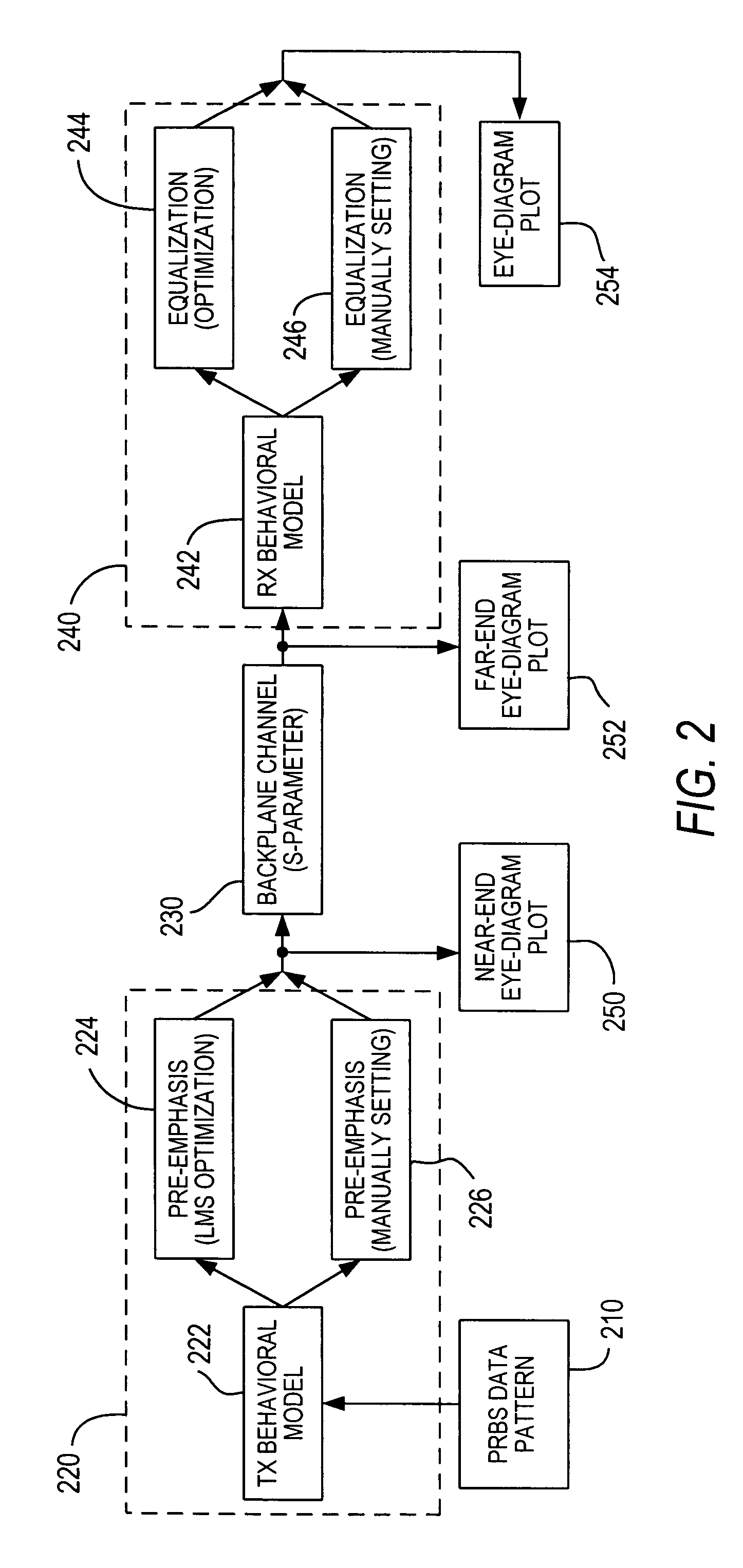Systems and methods for simulating link performance
a technology of link performance and simulation tools, applied in the field of high-speed serial interface links, can solve the problems of limiting unable to use link simulation tools, and unable to achieve the limitation of the maximum distance and bit rate carrying capacity of a transmission medium, so as to achieve the effect of accurate and rapid simulating link performance of a transceiver operating, less processing power, and reducing the effect of accuracy costs
- Summary
- Abstract
- Description
- Claims
- Application Information
AI Technical Summary
Benefits of technology
Problems solved by technology
Method used
Image
Examples
Embodiment Construction
[0027]FIG. 1 shows an illustrative block diagram of mathematical representations of a transceiver which may be modeled using a link simulation platform according to the principles of the present invention. The link simulation platform may model a transceiver with pre-emphasis and equalization in which the model substantially emulates the actual behavior at the silicon level in an actual transceiver. As shown, transceiver 100 may include a pre-emphasis filter 110, a transmitter 120, a transmission medium or backplane 130, a receiver 140, and an equalizer 150. As shown in FIG. 1, pre-emphasis filter 110 and transmitter 120 are enclosed by a dashed-line box to indicate that these two components may be mathematically modeled together. As also shown, equalizer 150 and receiver 140 are enclosed by a dashed-line box to indicate that these two components may be mathematically modeled together. In operation, data is provided by a data source (not shown) for transmission from transmitter 120 ...
PUM
 Login to View More
Login to View More Abstract
Description
Claims
Application Information
 Login to View More
Login to View More - R&D
- Intellectual Property
- Life Sciences
- Materials
- Tech Scout
- Unparalleled Data Quality
- Higher Quality Content
- 60% Fewer Hallucinations
Browse by: Latest US Patents, China's latest patents, Technical Efficacy Thesaurus, Application Domain, Technology Topic, Popular Technical Reports.
© 2025 PatSnap. All rights reserved.Legal|Privacy policy|Modern Slavery Act Transparency Statement|Sitemap|About US| Contact US: help@patsnap.com



